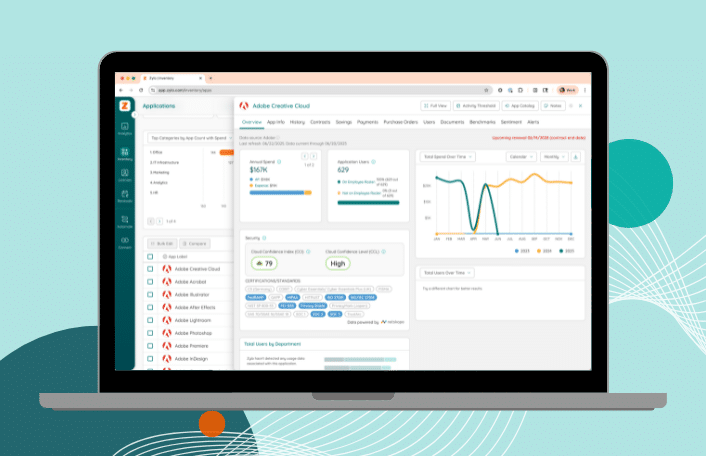
From Chaos to Control: Applying FinOps Thinking to SaaS
Table of Contents ToggleElevate Your Annual Security AuditBundle the Benefits of...
Back
Back
Search for Keywords...
Blog

Table of Contents
While healthcare companies undoubtedly have unique sensitivities, technology leaders across industries often see their challenges are ubiquitous: no matter the industry, the focus remains on security, resources, leadership buy-in, and the digital transformation.
With transformation top-of-mind, David Chou*, former Chief Information & Digital Officer at Children’s Mercy Hospital, creatively utilizes his annual security audit to unlock unexpected opportunities. Follow in David’s footsteps to level up security and drive transformation at your enterprise.
Protection against security breaches is a priority for many leaders, especially as massive breaches hit the news. David’s first accomplishment was to elevate the value of this security to his board.
By influencing and managing the perception of tech-related security to stakeholders, David has effectively communicated the association between risk and business goals and objectives. Then, David has wrapped processes to mitigate the risks by instituting regular scrutiny into the legacy technology and networks.
As a result, resources have been allocated to deep-dive into an annual security audit. From technology to corporate education, David identifies all security gaps and devises plans to alleviate the risk. Many times, these plans are a drive towards transformation.
When gaps in security are identified during their annual security audit, opportunities to advance, rather than simply bandage, are identified. Often, to leadership, bolstering corporate security is reason enough to make significant technology investments.
Additionally, by speaking the same language as his board, David is actively debunking the fear that cloud is less secure than on-premise: the significant investment cloud providers and vendors place in security is much more than resource-limited organizations.
Therefore, across the enterprise, this advancement is often in the form of cloud-based infrastructure systems. However, within business units, the digital transformation is in full swing through the purchase of third-party cloud-based software.
Leaning on the acknowledged need to secure, David can drive centralization of procurement processes to track shadow IT. While procurement processes will be centralized, shadow IT is positioned as a necessary evil (that can be secured through visibility) to advance the organization.
In recent years, the advanced security systems implemented by cloud-based software vendors far outweighs what is possible for on-premise security managers. Considering manpower and cost, many SaaS providers have the resources available to provide high levels of security.
However, not every SaaS vendor is created equal. Additionally, software security must consider how the technology operates within the enterprise-wide systems and how employees use the software. After all, cyber threats are technology-based and people-based.
Therefore, a complete security audit contains all business-owned technology as well as vendor-owned technology. Visibility throughout the enterprise tech stack is necessary to ensure adequate security measure are taken.
While the avoidance of all risk is impossible, David prioritizes ongoing monitoring and risk mitigation efforts. While driving enterprise-wide security policies and equipping decision makers with a strong foundation, David ensures that Children’s Mercy Hospital can mitigate risk while staying competitive.
Moving into 2019, one of David’s priority is to provide the best employee experience while remaining agile. As consumer technology raises the bar for user experience, healthcare organizations have a better idea of what kind of experiences employees expect.
With an ongoing culture shift surrounding expectations of the subscription economy, David is hopeful that the next five years could mean huge transformation for healthcare IT. Healthcare employees and customers could have an experience that more resembles big e-commerce players like Amazon.
Additionally, advances in recruitment and retainment technology will also enable healthcare organizations to stay competitive in the changing market. Better experience through the digital recruitment processes will help institutions overcome the shortage of qualified talent. Meanwhile, increased visibility into compensation, mentoring, and advancement, will raise retention rates.
Across the board, David has identified strategic digital transformation as the driver of competitive advancement. Through continued tech monitoring, security audit, and alignment with the board, David plans to bring the digital transformation initiatives to fruition.
*Since publication, David has accepted a new role as the VP, Principal Analyst at Constellation Research.

Table of Contents ToggleElevate Your Annual Security AuditBundle the Benefits of...

Table of Contents ToggleWhy Data Integrity Breaks DownWhat Does Data Integrity...

Table of Contents ToggleElevate Your Annual Security AuditBundle the Benefits of...

Table of Contents ToggleShelfware DefinedWhy Shelfware HappensPoor Organizational OversightShadow IT and...
| Cookie | Duration | Description |
|---|---|---|
| cookielawinfo-checkbox-analytics | 11 months | This cookie is set by GDPR Cookie Consent plugin. The cookie is used to store the user consent for the cookies in the category "Analytics". |
| cookielawinfo-checkbox-functional | 11 months | The cookie is set by GDPR cookie consent to record the user consent for the cookies in the category "Functional". |
| cookielawinfo-checkbox-necessary | 11 months | This cookie is set by GDPR Cookie Consent plugin. The cookies is used to store the user consent for the cookies in the category "Necessary". |
| cookielawinfo-checkbox-others | 11 months | This cookie is set by GDPR Cookie Consent plugin. The cookie is used to store the user consent for the cookies in the category "Other. |
| cookielawinfo-checkbox-performance | 11 months | This cookie is set by GDPR Cookie Consent plugin. The cookie is used to store the user consent for the cookies in the category "Performance". |
| viewed_cookie_policy | 11 months | The cookie is set by the GDPR Cookie Consent plugin and is used to store whether or not user has consented to the use of cookies. It does not store any personal data. |
